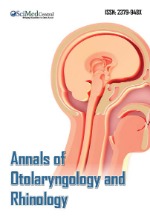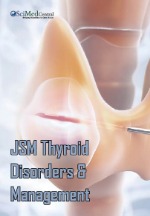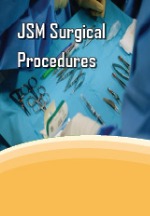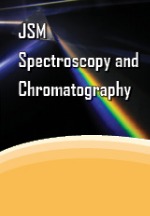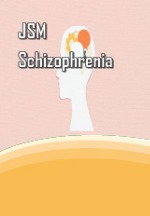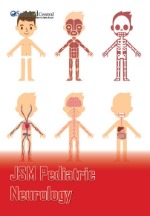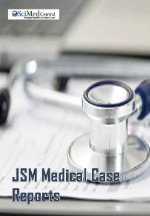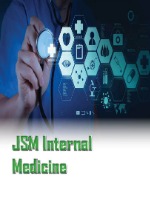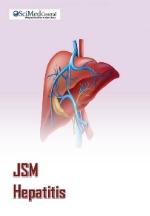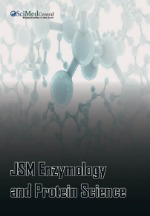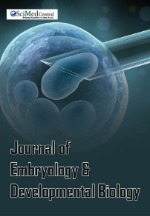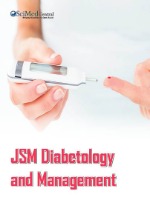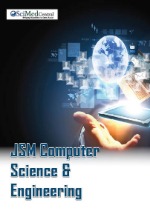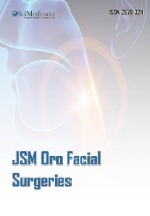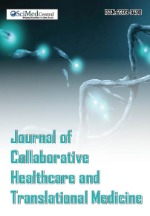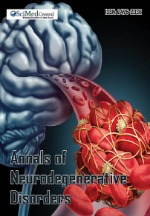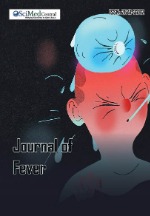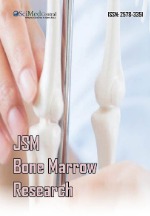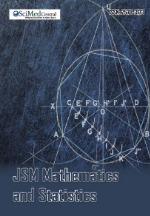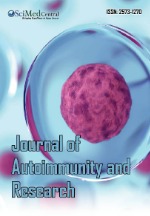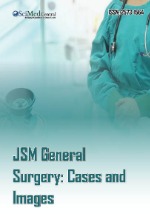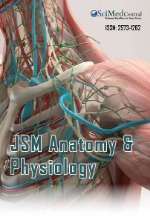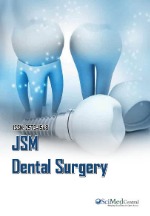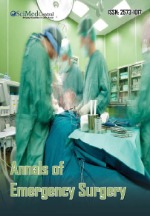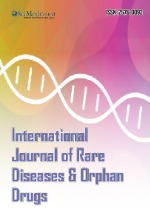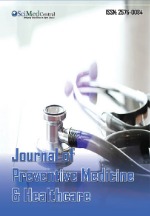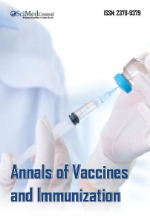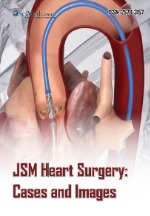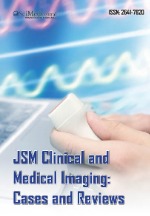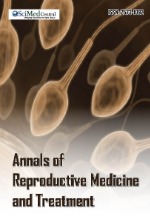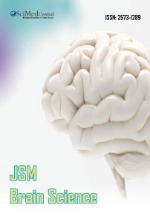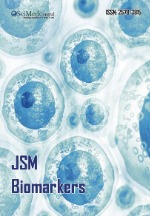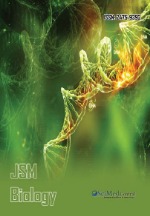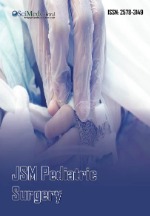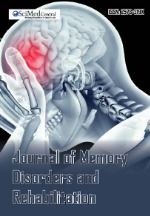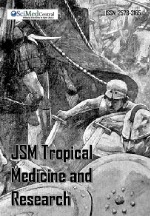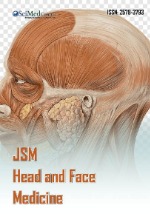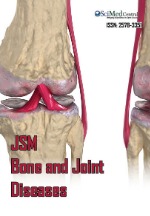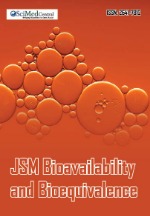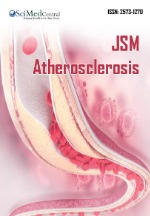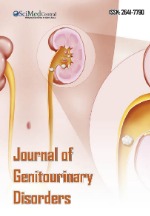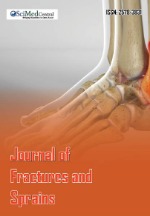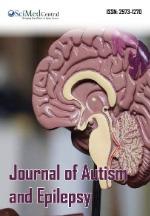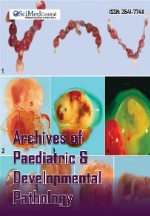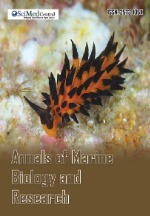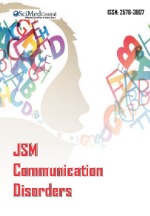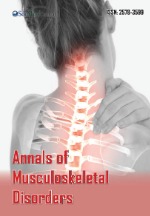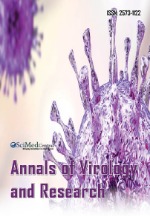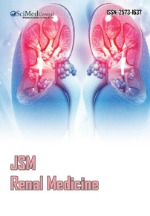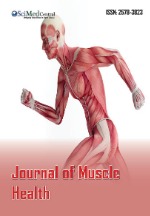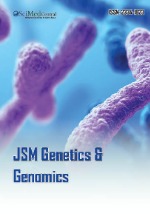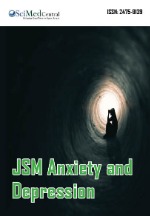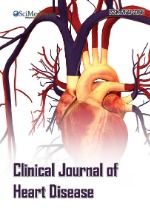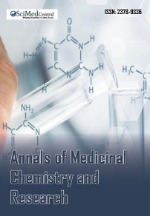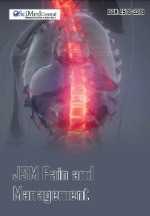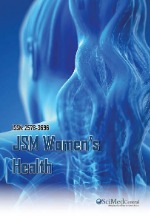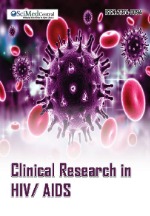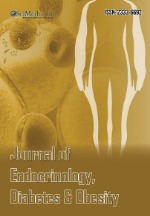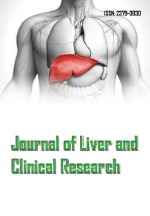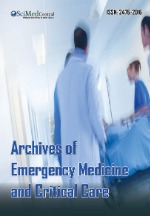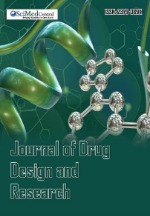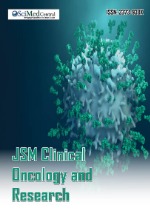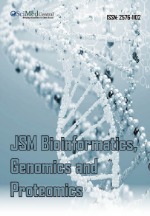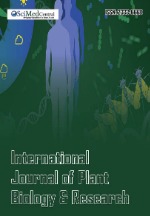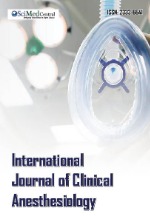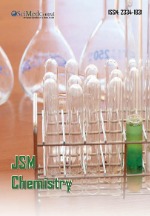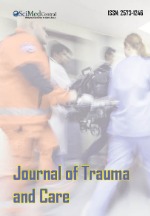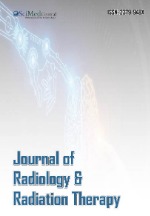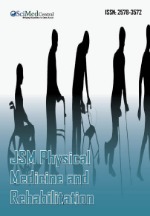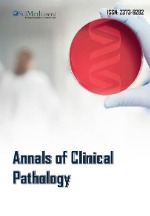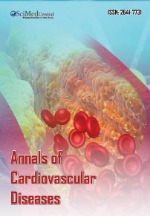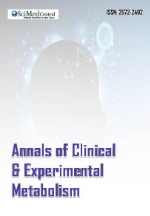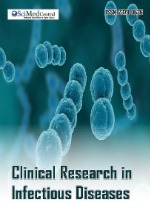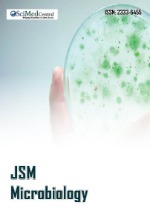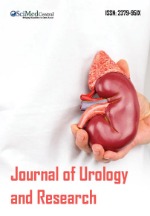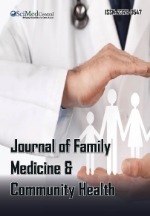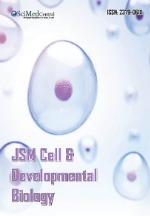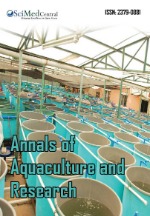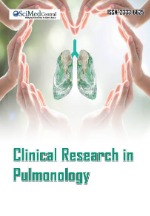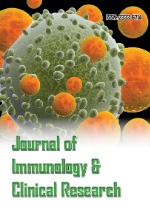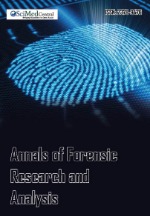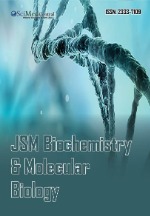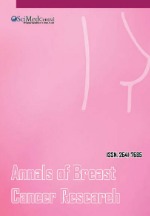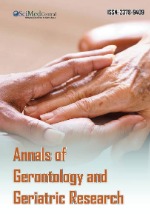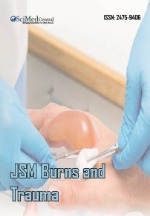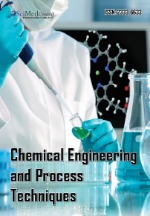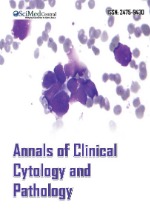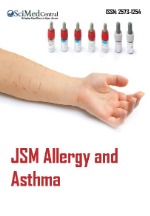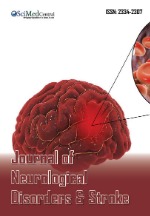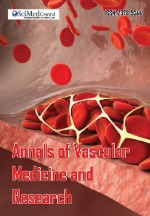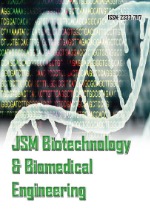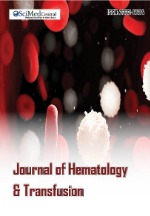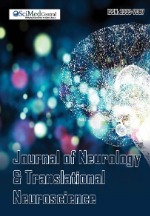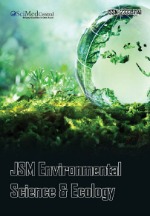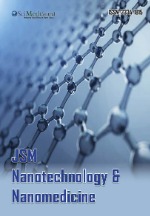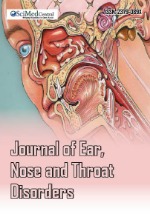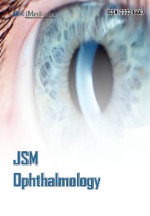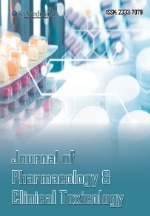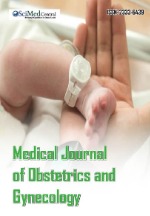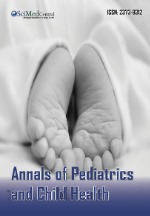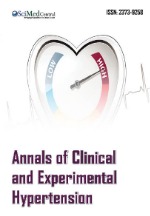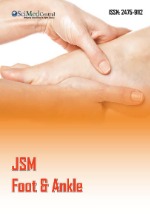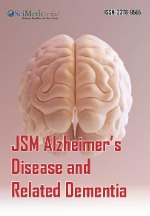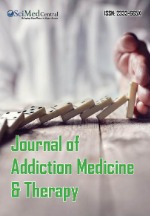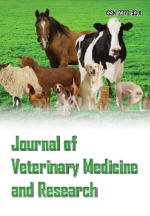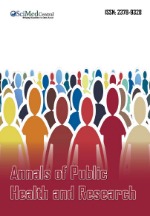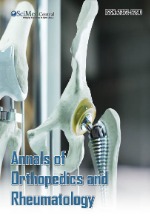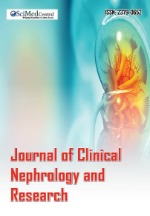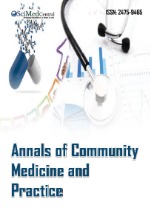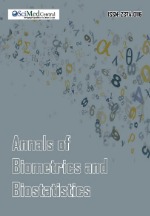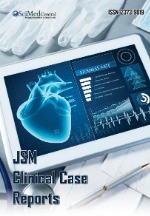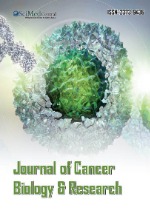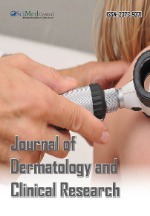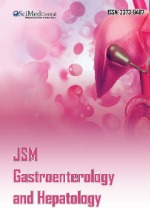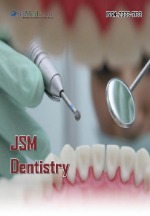ENT Manifestations of Tuberculosis: 25 Cases Series
- 1. Department of ENT, Universitary Hospital of Annaba, Algeria
Abstract
Tuberculosis is a public health problem for many countries. Extra nodal ENT locations are rare and may be localized in cervical lymph nodes, pharyngeal, laryngeal, nasal, buccal cavity and glandular sites parotid, submandibular and thyroid glands.
This study reports 25 cases of extra pulmonary tuberculosis colliged in our department (lymphatic tuberculosis exclude). The results showed many and variable localizations: pharyngeal, laryngeal, otitis, nasal and paranasal, thyroid gland and 3 cases of multiples localizations.
The diagnosis was difficult and requires clinical exam, biology and imaging procedure. The final diagnosis of tuberculosis was made after bacteriologic or histopathologic exam of different materiel (biopsy or after surgical procedure). All patients received antituberculous therapy with a favorable outcome.
Keywords
• Tuberculosis
• Nasal tuberculosis
• Pharyngeal tuberculosis
• Tuberculosis otitis media
• PCR
Citation
Kharoubi S (2025) ENT Manifestations of Tuberculosis: 25 Cases Series. J Chronic Dis Manag 9(1): 1044
INTRODUCTION
Tuberculosis is still an important pathology in the developing countries. It is a chronic granulomatous infection and communicable disease caused by mycobacterium tuberculosis. Out of the extra pulmonary manifestations of tuberculosis, ear, nose and throat manifestations are mainly the form of cervical lymphadenopathy, otitis media, laryngitis, pharyngitis and nasal tuberculosis [1].
The diagnosis of extra pulmonary tuberculosis is not easy and requires anamnesis, risk factors evaluation, clinical exam, imaging and biology screening.
The final diagnosis is made after bacteriological tests (acid-fast bacilli stainting, culture by lowenstein jensen method) and histopathological exam (caeseating granulomas surrounded by epithelioid cells, gigant cells, lymphocytes).
MATERIALS AND METHODS
This study is a retrospective analysis conducted at our department of ENT for a period of 33 years, from 1990 to 2023.
All patients underwent with uniform management : identification of principal complaints, duration of symptoms, age, sex, economic conditions of live, clinical exam, imaging (CT-scan, Chest X-Ray), biology,tuberculin test ,biopsy or microbiology tests (research of mycotuberculosis bacteria with zieel-nelsen coloring and lowenstein-jensen medium culture), research of another location (chest).
After having made the diagnosis, the treatment by antituberculous chemotherapy was given. In our country, the antituberculous treatment is codified (national protocol of tuberculosis management): association of three antibiotics; rifampicin, pyrazinamid, ethambutol during 2 mouths and rifampicin, pyrazinamid during four mouths (RHZ/RH-2/4). Antituberculosis treatment is elaborate, given and following up (secondary effects and complications) by a special unity dedicate for this work (Antituberculous unity)
RESULTS
Twenty five (25) cases of ENT tuberculosis with variable localization where colliged in this study.
Tuberculosis otitis media
There were 3 cases of tuberculosis otitis media. It included 2 females and 1 male with46, 42 and 24 years. Ear discharge is noted at all cases with facial palsy in 2 cases (grade IV House Brackman). Otoscopy showed congestion in one case, multiple perforations in one case and a large membranic perforation with pale hyperplasic mucous of middle ear. Tuberculin test was positive in one case (induration of 20 mm). The diagnosis was suspected in only one case (facial palsy and multiple perforation of tympanic membrane).Tuberculosis of middle ear was confirmed after mastoidectomy in one case (histopathological exam of surgical materiel), bacteriology in two cases (lowenstein-jensen culture of pus). One patient was admitted in our department after neurosurgical surgery (removing of a progressive temporal lesion of 30mm in CT scan) diagnosed tuerculosis granuloma-tuberculomas after histopathological exam). This patient has a chronic otorrhoea with tympanic destruction membrane and the culture of pus identified Mycobacterium bacillus. The evolution was safety without complaints and amelioration of facial palsy in one case (grade II HB) (Table 1)
Table 1: Tuberculous otitis media. Clinical cases and modalities of diagnosis
|
TUBERCULOUS OTITIS MEDIA. |
|
0,1% OF ALL TUBERCULOSIS. |
|
0,04-0,9% OF CHRONICSUPPURATIVE OTITIS MEDIA. |
|
TUBERCULOUS OTITIS MEDIA |
|
REPORT OF 3 CASES. |
|
- Case N°1: Men, 41 years, chronic right otorrhea, acute right otomastoitidis. |
|
Tympanomastoidetomy, histologic exam of surgery materiel. |
|
Final diagnosis: Tuberculosis otitis media. |
|
Total curely after antituberculous treatment. |
|
|
|
-Case N°2: Women, 42 years, history of pulmonary tuberculosis (3 mounts), chronic |
|
Otorrhea, facial palsy (IV House Brackman). |
|
Otoscopy: multiple membrane tympanic perforation in right ear |
|
.skin test 12 mm. CT scan: mastoid bone lysis. histologic exam of |
|
Surgery material |
|
Final diagnosis: Tuberculosis otitis media with facial palsy complication. |
|
Antituberculous treatment. |
|
Result: dispartion of otorrhea, facial palsi II (HB). |
|
|
|
- Case N°3: Women 24 years. admitted with neurosurgery and removing of temporal |
|
lesion (3 cm).Chronic right otorrhea and facial palsy (IV -HB). |
|
Otoscopy: large membrane tympanic perforation in right ear and pale |
|
hyperplasique mucous of middle ear. Skin test 18mm. |
|
CT scan: mastoid bone lysis. |
|
histologic exam of neurosurgery materiel: tuberculomas |
|
Final diagnosis: Tuberculosis temporal and otitis media with facial palsy |
|
Complication. Antituberculous treatment. |
|
Result: dispartion of otorrhea, facial palsy IV (HB). |
|
|
|
TUBERCULOUS OTITIS MEDIA |
|
DIAGNOSIS MODALITIES. |
|
Classic Triad: painless otorrhea, multiple tympanis membrane perforations, |
|
Facial palsy. |
|
Other Possible symptoms: otalgia, tinnitus, hearing loss, vertigo |
|
CT- scan: Soft tissue disease. Bony erosion. |
|
Diagnosis: Tissue biopsy - acid-fast bacillus testing. |
|
Tissue / sputum culture. |
|
Approval treatment test: if high lest probability of tuberculosis. |
Nasal tuberculosis
4 cases of nasal tuberculosis were colliged. 3 septal locations and 1 maxillary sinus site. 3 females and 1 male with age range 42 to 75 years and 65 years means. The symptoms where no specific and associated nasal obstruction, epistaxis, rhinorrhea and nasal crusting. The mean duration of symptoms was 6 mouths with many consultations and treatments (antibiotic and corticoid) without success. Endonasal endoscopy showed 2 nasal perforation, one tumoral aspect, thickness congestive mucous with purulent secretion and crusting. CT scan show opacity of maxillary sinus in one case and septal destruction with mass in 2 cases (Figure 1).
Figure 1:Axial CT-scan: nasal septum tuberculosis: granular lesion with nasal septum perforation.
The diagnosis was made after biopsy in 3 cases and after caldwell-luc surgery in 1 case. After antituberculous medication we noted the cured of all symptoms and a normal aspect of nasal mucous with 3 septal perforations sequels.
Tuberculous of tonsils
There were 3 cases of tonsilis tuberculous, 2 females and 1 male with 40, 44 and 56 years. The duration of symptoms is between 4 and 7 mouths and the principal complains was dysphagia with cervical lymphadenopathy in 2 cases.
The examination of oropharynx showed hypertrophic tonsillitis with nodular aspect of mucous in 2 cases and a tumoral aspect (bourgeon) in one case. Lymphoma was suspected in all cases and the diagnosis of tuberculosis was performed after tonsils biopsy (caeseating granulomas). All cases where cured after medical treatment without complications.
Tuberculous laringitis
3 cases where colliged, 3 males, 70, 72 and 68 years. The principal symptoms were dysphonia with cough and dyspnea in one case. Pulmonary location (open pulmonary tuberculosis) was approved in one case. Endoscopic exam noted a bilateral congestive vocal cord in one case, posterior laryngitis (inter arytenoids congestive swelling) in one case and tumoral aspect (right vocal cord) in the last case. The diagnosis was made after bacteriological test (positive about mycobacterium tuberculosis after lowenstein-jensen culture) in 2 cases and after biopsy in one case. Sequellar dysphonia (laryngeal fibrosis) was noted in one case.
Tuberculosis of thyroid gland
In one case female with 54 years consulted after multinodular goiter screening. The biologic tests where normal (T3-T4-TSH, ultra sound neck and fine needle aspiration- FNAC). During surgery, we observed a diffuse nodular goiter with bilateral lymphadenopathy of VI site. Total thyroidectomy with bilateral (VI) surgical excision of the nodes was performed. The histopathological exam noted caeseating granulomas in thyroid gland and in recurrent nerve nodes. Antituberculous treatment was performed (RHZ/RH 2/4) with safety evolution without complications
Pharyngeal tuberculosis
There were 8 cases of pharyngeal tuberculosis 4 females and 4 males. The range of age was between 16 to 75 years with 40 years mean of age. The duration of symptoms was between 2 and 24 mouths and 9 mouths mean. Epistaxis, nasal obstruction, lymphadenopathy (II and III sites) where the principals symptoms. Nasopharyngeal endoscopy showed infiltrating mucous (1 case), tumoral aspect (4 cases), ulceration (1 case), congestion with mucopurulent secretions and diffuse pale granulations (1 case pharyngeal miliary tuberculous). In 2 cases, the endoscopy noted a diffuse a yellow hypertrophy of adenoid vegetations (adults). CT scan showed infiltrating nasopharyngeal mucous (1 case, tumoral aspect without bone lysis (4 cases) and benignant hypertrophic adenoiditis (2 cases) and thickness mucous (1 case of pharyngeal miliary tuberculous) (Figure 2,3).
Figure 2:Axial CT scan- nasopharyngeal tuberculosis: infiltrating right mass in lateral wall of the nasopharynx.
Figure 3:Sagittal CT scan- nasopharyngeal tuberculosis: hypertrophy of adenoidis.
Biopsy was performed in all cases and the diagnosis of pharyngeal tuberculosis confirmed by histopathological exam. All patients were declared cured after 6 mounts of treatment.
Multifocal tuberculosis
There were 4 cases of multifocal tuberculosis, all cases were females with a range of age between 18 and 46 years (mean of age 27,6 years). In the first case, we observed three localizations: nasopharyngeal, nasal and cutaneous. In the second case nasopharyngeal, nasal and cervical lymphadenopathy. The last case nasopharyngeal, tonsils and nasal tuberculosis. The diagnosis was making after multiple biopsy and histopathologic exam. All patients received antituberculous therapy (RHZ/RH-2/4) with good results.
DISCUSSION
Tuberculosis is a specific and global infection caused by mycobacterium gender bacteria classified classically in pulmonary and extra pulmonary disease. Infection usually occurs via lympho-hematogenous spread from primary lung disease but many sometimes appear after pharynx inoculation or reactivation of dormant acid-fast bacilli in the lymphatic system. The literature reported an incidence between 15-40% for extra pulmonary tuberculosis [2]. We observed a recrudescence of this disease after HIV infection, socio economic degradation of the condition of live of the population and difficulties to access to health faculty. Head and neck represents 10% of extra pulmonary tuberculosis and lymphadenitis accounted for 95, 5% of these cases especially the posterior triangle lymph nodes [3]. Other less common locations are larynx, deep neck spaces (abscess), nasopharyngeal site (adenoids), tonsils, nasal and paranasal region, oral cavity (tongue, palate), salivary gland (parotid), thyroid gland and skin. There were some risk factors for tuberculosis must be reveled for facilitate the diagnosis in some recurrence or chronic ENT manifestations: immunocompromised status, young age, malnutrition, diabetes, immunomodulatory drugs, promiscuity, and smoking [4,5].
Bacteriolgy
The conventional methods for detection of tuberculosis are acid fast bacilli staining, culture by lowenstein- jensen method (8 weeks).
Newer diagnostic modalities are real-time polymerase chain reaction (PCR), Gene X pert and automated tuberculosis culture (rapid liquid culture method with positive cultures within 10 to 12 days) [6-11].
Clinical Presentation
There is not specific symptoms in ENT tuberculosis and we must considerate a lot of hypothetical considerations. In beginning, we appreciate the general status of patients (asthenia, night fever, weight loss and asthenia), evaluation of risk factors (tuberculosis in family or works, immunodeficiency, diabetes, kidney failures) and negative response to conventional treatments. The chronicity or recurrence of the symptoms is good signals for the presence of persistent or chronic inflammatory reaction. Clinical exam (endoscopy) research skin lesions (skin fistula, neck scars), bone lysis (otoscopy- tympanal bony lysis), multiple pale granular lesions (otitis,nasal, nasopharyngeal, oropharyngeal mucous), destruction and perforation (tympanic membrane- classic multiple perforations, nasal septal perforation, velar or palatal perforation), thickness pus in nasal or pharyngeal mucous, cervical adenopathy (with periadenitis or fistulisation), facial palsy with otologic’s symptoms (otorrhroea, multiple perforation, hyperplasic mucous, bone lysis) can suggesting the diagnosis of tuberculosis [12-17].
Imaging is important step in diagnosis, evaluation of the complications and following of ENT tuberculosis. CT scan is the first choose and can showing the site of primary lesion, aspect (bourgeon, infiltrating, ulcerous mass), the extension in deep spaces, presence of bone lysis, abscesses, cervical lymphatic screening and appreciate mediastino pulmonary active or sequellar lesions [18,19]
MRI reports more details about mucous lesions, superficial and deep spaces, deep lymphadenitis (para and retropharyngeal spaces) and neuro meningeal structures (ear, skull base tuberculosis) [20].
Hemogramm was habitually normal or shows anemia (malnutrition) or neutopenia. The lymphocytosis is rarely observed but may be to specific evocation for tuberculosis infection. VS and CRP was raised and will be to normalize after curing. The skin tests (Mantoux test) were variable (vaccination), positive in some cases (induration superior to 20 mm) and negative in other cases [21,22].
The diagnosis of tuberculosis is make by bacteriology or/and histopathological exam. Bacteriologic diagnosis required using lowenstein- Jensen culture after 2 to 5 mounts. Actually this during is reduced after utilization of liquid culture (Table 2).
Table 2: Modalities of biologic diagnosis of tuberculosis
|
DIRECT TEST: |
|
CONVENTIONAL TEST: |
|
1-Acid Fast Bacilli (AFB) Staining: Ziehl-Nelsen staining method (light microscope). |
|
2-Culture in Solid Medium: (2 - 8 weeks). |
|
Acid Fast Bacilli (AFB) culture by Lowenstein-Jensen method |
|
3- Culture in Liquid Medium: (10-14 days). |
|
-Bacteg MGIT 960 (mycobacteria growth indicator tube) |
|
-Versa TREK. |
|
IMMUNOCHROMATOGRAPHY: |
|
-Detection (after culture) of antigen MPT64. |
|
-Detection of lipoarabinnomannasa (LAM) in urinary prelevement. |
|
MASS SPECTROMETRY: |
|
-MALDI-TOF: matrix assisted laser desorption ionization time of flight. |
|
GENOTYPIC TEST: |
|
-Nucleic acid amplification test: PCR |
|
-Test Xpert MTB/RIF. |
|
INDIRECT TEST: |
|
LIBERATION OF INTERFERON GAMMA IGRA (3 days). |
|
-Quantiferon-TB |
|
-T-SPOT-TB |
The culture authorize recognizing of gender (typical or atypical mycobacteria), the filiations group (human, bovis or another mycobacteria) and obtain a drug sensitivity testing (antibiogramm) especially for resistant cases. Bacteriologic screening is also interesting to following epidemiology, genetic mutations and refractory varieties of mycobacteria after antibiotherapy.
Histopathological exam is also a good procedure of diagnosis and identified a specific lesion: a caeseating granulomas surrounded by epithelioid cells, gigant Langerhans cells (Figure 4).
Figure 4:Tuberculosis- histopathological aspect giganto cellular granuloma.
Before treatment it is habitually to research others localizations of tuberculosis: chest (chest X-rays), kidney (ultrasound and urinary bacteriological tests) and also research immunocompromised status (HIV and diabetic status)
The differential diagnoses of tuberculosis include all pathologies with giganto cellular granulomas finding. We cited sarcoidosis, amyloidosis, wegener’s granulomatosis, periarteritis nodosa and some others infectious diseases of neck, pharyngeal or nasosinusal localization: actinomycosis, leprous, histoplasma, candidosis [23].
Bacteriologic tests
Serology and histopathological exams can procure facility with the diagnosis of tuberculosis. In some difficulties cases we can recur to therapeutic test and evaluate his response with the evolution of pathology.
The association of tuberculosis and cancer can to be observed and reported in the literature (nasopharyngeal, laryngeal and cervical nodes) and may to be recognized. We must take into account age (superior to 50 years),
alcoolo- tabagic history and atypical symptoms. Endoscopy exam can procure suspicion (ulcerous mass, important destruction or extension, hemorrhagic contact lesion); imaging (bone lysis, deep space invasion) and biopsy can to helpful in these rare cases. Atypical or not curly evolution imposes a new screening (imaging and biopsy) of the patient [24].
The treatment of tuberculosis is essentially medical and consists of a specific antibiotherapy (minimally 3 antibiotics) in a long time (6 months). The protocol utilizes rifampicin (10 mg/kg/day), isoniazide (5mg/kg/day) and pyrazinamide (25 mg/kg/day) during 2 months followed by rifampicin, isoniazid during 4 months. In multiresistant cases or in presence of positive HIV serology, the center of disease control (CDC) of Atlanta proposes 5 or 6 antituberculous drugs before obtaining the result of drug sensitivity testing. We must screen the secondary effect of the antituberculous treatment especially liver perturbances (cytolysis), hematologic and neurologic toxicity [25].
Fluoroquinolones antibiotics was admitted to antituberculous protocol therapy (ciprofloxacin, ofloxacin, sparfloxacin) but without clearly indications and will to be reserved for multi drug resistant cases [25,26].
Corticoid may to be utilized after beginning antituberculous treatment with courtly period (10 to 15 days) for ameliorate some symptoms; dysphonia, dysphagia and pain secondary to inflammatory reaction of the mucous.
Surgical procedure is indicated for treatment of synechias, symptomatic septal perforation, removing granular or polyp’s reaction, meatotomy and closing (flaps) velar, palatal or tympanic perforation [16,17].
CONCLUSION
Tuberculosis continues to be a worldwide public health problem. Extra pulmonary tuberculosis is rare but can to be seen and was regularly to be report in the literature.
The re-emergence of this disease (association with HIV, increase of multi-resistant strains of mycobacterium tuberculosis, migration moving and rampant use of immunosuppressive and immunomodulatory drugs) impose a vigilance and rapid diagnosis by practitioner [26]. We hope that modalities of diagnosis will to be accessible for all (PCR, liquid culture) for making easily and rapidly the diagnosis.
Generally, the treatment is usually leads to a favorable outcome. Surgery may be required in some cases. The multi-resistant strains of mycobacterium must to be recognized and efficacy managed.
REFERENCES
- Nittu Thomas N, Nambiar SS, Nampoothiri PM. Extrapulmonary Tuberculosis: An Otorhinolaryngologist’s Perspective. Indian J Otolaryngol Head Neck Surg. 2022; 74: S5562–S5568.
- Mazza Stalder J, Nicod L, Janssens JY. Extrapulmonary tuberculosis. Rev Mal Respir. 2012; 29: 566-578.
- Nalini B, Vinayak S. Tuberculosis in ear, nose, and throat practice: its presentation and diagnosis. Am J Otolaryngol. 2006; 27: 39-45.
- Sharma S, Rana AK. ENT manifestations of tuberculosis: an important aspect of ENT practice. PAMJ. 2020; 36: 1-8.
- Narasimhan P, Wood J, Macintyre CR, Mathai D. Risk factors for tuberculosis. Pulm Med. 2013: 828939.
- Tortoli E, Urbano P, Marcelli F, Simonetti TM, Cirillo DS. Is real-time PCR better than conventional PCR for mycobacterium complex detection in clinical samples. J Clin Microbiol. 2012; 50: 2810-2813.
- Chakravorty S, Sen MK, Tyagi JS. Diagnosis of extrapulmonary tuberculosis by smear, culture, and PCR using universal sample processing technology. J Clin Microbiol. 2005; 43: 4357-4362.
- Penz E, Boffa J, Roberts DJ, Fisher D, Cooper R, Ronksley PE, et al. Diagnostic accuracy of the Xpert MTB/RIF assay for extrapulmonary tuberculosis: a meta analysis. Int J Tuberc Lung Dis. 2015; 19: 278- 284.
- Walusimbi S, Bwanga F, De Costa A, Haile M, Joloba M, Hoffner S. Meta-analysis to compare the accuracy of GeneXpert, MODS and the WHO 2007 algorithm for diagnosis of smear-negative pulmonary tuberculosis. BMC Infect. Dis. 2013; 13: 507.
- Kim YW, Kwak N, Seong MW, Kim EC, Yoo CG, Kim YW, et al. Accuracy of the Xpert MTB/RIF assay for the diagnosis of extrapulmonary tuberculosis in South Korea. Int J Tuberc Lung Dis. 2015; 19: 81-86.
- Lotz A, Ferroni A, Beretti JL, Dauphin B, Carbonnelle E, Guet-Revillet H, et al. Rapid identification of mycobacterial whole cells in solid and liquid culture media by matrix-assisted laser desorptionionization- time of flight mass spectrometry. J Clin Microbiol. 2010; 48: 4481- 4486.
- Kim KY, Bae JH, Park JS, Lee SS. Primary sinonasal tuberculosis confined to the unilateral maxillary sinus. Int J Clin Exp Pathol. 2014; 7: 815-818.
- Yashveer JK, Kirti YK. Presentations and Challenges in Tuberculosis of Head and Neck Region. Indian J Otolaryngol Head Neck Surg. 2016; 68: 270-274.
- Kakisi OK, Kechagia AS, Kakisis IK, Rafailidis PI, Falagas ME. Tuberculosis of the oral cavity: a systematic review. Eut J Oral Scl. 2010; 118: 103-109.
- Aisenberg GM, Jacobson K, Chemaly RF. Extrapulmonary tuberculosis active infection misdiagnosed as cancer: Mycobacterium tuberculosis disease in patients at a comprehensive cancer center (2001-2005). Cancer. 2005; 104: 2882-2887.
- Kharoubi S. Pharyneal tuberculosis (pharyngeal miliary tuberculosis
- Kharoubi S. Pharyngeal tuberculosis: analytic study about 10 cases. Rev Laryngol Otol Rhinol. 1998; 119: 203-207.
- Das A, Das SK, Pandit S, Bsuthakur S. Tonsillar tuberculosis: a forgotten clinical entity. J Family Med Prim Care. 2015; 4: 124-126.
- Pai KK, Omiunu AO, Peddu DK, Au VH, Baredes S, Jyung RW, et al. Tuberculosis of the middle ear: A systematic review. Am J Otolaryngol Head Neck Med Surg. 2022; 43: 103571.
- Gambhir S, Ravina M, Rangan K. Imaging in extrapulmonary tuberculosis. Int J Infect Dis. 2017; 56: 237-247.
- Bokare B, Mehta K. Otolaryngological manifestations of tuberculosis:
-
a clinical study. Indian J otolaryngol Head Neck Surg. 2020.
- Vaid S, Lee YYP, Rawat S, Luthra A, Shah D, Ahuja AT. Tuberculosis in the head and neck-a forgotten differential diagnosis. Clin Radiol. 2010; 65: 73-81.
- Thomas N, Nambiar SS, Nampoothin PM. Extrapulmonary tuberculosis: an otorhinolaryngologist’s perspective. Indian J Otolaryngol Head Neck Surg. 2022; 74: 5562.
- Nadour K, Hemmaoui B, Errami N, Elboukhari A, Attifi H, Touihem N, et al. Tonsillitis tuberculous simulating tonsil cancer: case report. Rev Laryngol OtolRhinol. 2009; 130: 301-303.
- Scorpecci A, Bozzola E, Villani A, Marsella P. Two new cases of chronic tuberculous otomastoiditis in children. Acta Otorhinolaryngologica Italica. 2015; 35: 125-128.
- Richardus RA, Jansen JC, Steens SC, Arend SM. Two immigrants with tuberculosis of the ear, nose, and throat region with skull base and cranial nerve involvement. Case Rep Med. 2011; 2011: 675807.






